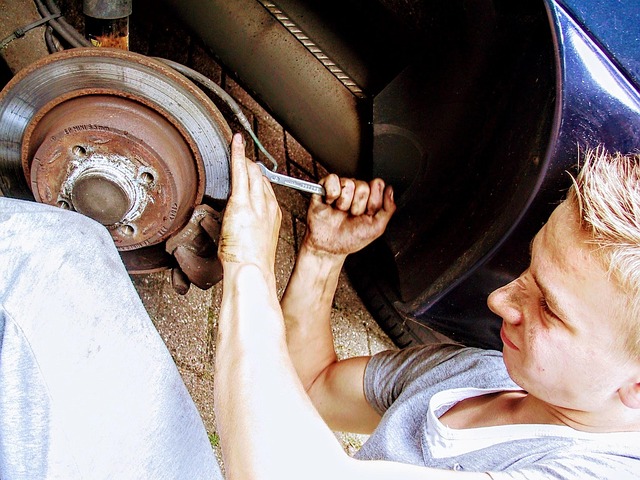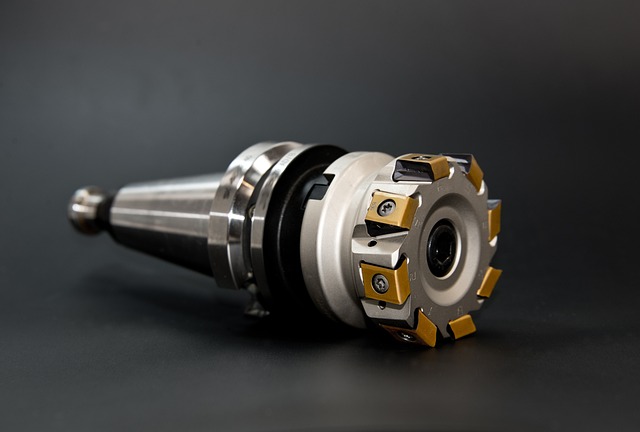Fixing Mercedes Smartphone Integration: Troubleshooting Audio Dropouts
Mercedes smartphone integration can enhance driving experiences but isn't immune to glitches li…….
In the rapidly evolving world of automotive technology, Mercedes-Benz has long been at the forefront of innovation, seamlessly merging luxury vehicles with cutting-edge digital solutions. One such groundbreaking feature is Mercedes smartphone integration repair, a system that allows drivers to connect their smartphones to their vehicles for enhanced functionality and convenience. This article delves into the intricacies of this technology, exploring its development, global impact, economic implications, technological advancements, regulatory landscape, challenges, successful implementations, and future prospects. By providing a comprehensive understanding of Mercedes smartphone integration repair, readers will gain valuable insights into the ever-changing digital automotive ecosystem.
Definition: Mercedes smartphone integration repair refers to the process of installing, configuring, and troubleshooting software and hardware systems within Mercedes vehicles to enable seamless interaction with smartphones. This integration facilitates various functions such as hands-free calling, text messaging, navigation, music streaming, and vehicle diagnostics, all accessible via the driver’s smartphone.
Core Components:
Hardware Interface: The system comprises specific connectors and ports designed to interface with a user’s smartphone. These interfaces ensure secure data transfer and communication between the vehicle and the device.
Software Platform: A sophisticated software platform acts as the middleware, managing and interpreting data exchanged between the smartphone and the vehicle. This software is regularly updated to introduce new features and enhance compatibility with different smartphone operating systems.
Voice Control and Virtual Assistant: Many Mercedes vehicles equipped with smartphone integration employ advanced voice recognition technology and virtual assistants (e.g., Amazon Alexa or Google Assistant) to enable hands-free control of various functions, including navigation, media playback, and vehicle settings.
Security Measures: Data security is paramount in smartphone integration systems. Encryption protocols, secure authentication methods, and regular software updates are implemented to protect user information and prevent unauthorized access.
Historical Context: The concept of integrating smartphones with vehicles gained traction in the early 2010s as consumer demand for connected car technologies surged. Mercedes-Benz recognized this trend early on and began incorporating smartphone integration features into its vehicle models around 2015. Since then, continuous improvements have been made to enhance compatibility, functionality, and security.
Significance: This technology offers drivers unparalleled convenience, safety, and connectivity while driving. It reduces the need for manual interactions with the vehicle’s infotainment system, allowing users to stay focused on the road. Moreover, it serves as a gateway to a wide range of in-car services, including real-time traffic updates, navigation assistance, and remote vehicle monitoring.
Mercedes smartphone integration repair has had a profound global impact, reshaping the way drivers interact with their vehicles and influencing the broader automotive industry.
International Influence:
Europe: Mercedes-Benz’s home market, Europe, has been at the forefront of smartphone integration adoption due to stringent safety regulations and a highly digitalized consumer base. Countries like Germany and Sweden have seen widespread implementation of these systems in both private vehicles and taxicab fleets.
North America: The United States and Canada have witnessed significant growth in smartphone integration, driven by consumer demand for advanced infotainment features and a robust aftermarket for customization and repairs.
Asia Pacific: Countries like Japan, South Korea, and Australia have embraced smartphone integration as part of their digital transformation efforts, with manufacturers offering integrated solutions to enhance local driving experiences.
Trends Shaping the Landscape:
Increased Smartphone Compatibility: Modern vehicles are increasingly designed with multiple smartphone connectivity options, supporting various operating systems (iOS, Android) and wireless standards (Bluetooth, Apple CarPlay, Android Auto).
Over-the-Air (OTA) Updates: The ability to update software components remotely through OTA updates has become a standard feature, ensuring that integrated smartphones remain secure, efficient, and compatible with the latest apps.
Advanced Driver Assistance Systems (ADAS): Integration of smartphone features with ADAS enhances safety by providing real-time data for collision avoidance systems, adaptive cruise control, and lane-keeping assist.
Personalized In-Car Experiences: Vehicles equipped with smartphone integration can learn driver preferences, offer tailored recommendations, and provide a personalized user experience, much like modern smartphones do.
The economic implications of Mercedes smartphone integration repair are multifaceted, impacting various sectors and influencing global automotive markets.
Market Dynamics:
Vehicle Sales: Smartphone integration has become a significant selling point for luxury car manufacturers, boosting sales figures and premium pricing. Models offering advanced connectivity features often command higher market values.
Aftermarket Services: The repair and maintenance industry has seen the emergence of specialized shops focused on smartphone integration repairs, creating new business opportunities and revenue streams.
Investment Patterns:
Automotive Manufacturers: Mercedes-Benz and other luxury carmakers have invested heavily in research and development to integrate cutting-edge technologies, ensuring their vehicles remain competitive in a rapidly evolving market.
Technology Providers: Companies specializing in software development, cybersecurity, and mobile app creation have benefited from partnerships with automotive manufacturers, leading to innovative solutions and new business models.
Economic Systems and Impact:
Job Creation: The digital transformation of the automotive industry has led to the creation of specialized jobs, including software engineers, data analysts, and mobile application developers, contributing to local economies.
Supply Chain Growth: Increased demand for smartphone integration components and services has expanded global supply chains, with manufacturers sourcing parts from various regions, fostering international trade.
Mercedes smartphone integration repair is a testament to technological progress, continually evolving with each new software update and hardware revision.
Significantly Advanced Features:
Enhanced Voice Control: Improvements in natural language processing have led to more intuitive voice control systems, enabling drivers to perform complex tasks without taking their hands off the steering wheel.
Contextual Awareness: Modern systems can recognize a driver’s context (e.g., location, time of day) and provide relevant information and services, enhancing convenience and safety.
Advanced Navigation: Real-time traffic updates, 3D mapping, and turn-by-turn directions with augmented reality overlays have made navigation more efficient and engaging.
Integration with Smart Homes: Some advanced systems allow drivers to control smart home devices remotely from their vehicles, further blurring the lines between in-car and home automation experiences.
Emerging Technologies:
Artificial Intelligence (AI): AI algorithms are being used for predictive analytics, personalized content delivery, and improved natural language processing, making interactions with the system more human-like.
5G Connectivity: The rollout of 5G networks promises faster data transfer rates, enabling real-time streaming of high-definition media and seamless remote services, such as over-the-air software updates.
Internet of Things (IoT): Integration with IoT devices allows for vehicle-to-home (V2H) and vehicle-to-grid (V2G) communication, enabling new energy management solutions and enhanced connectivity.
The regulatory landscape surrounding Mercedes smartphone integration repair is critical in ensuring consumer safety, data privacy, and ethical practices.
Key Policies and Regulations:
Data Privacy Laws: Strict data protection regulations, such as the General Data Protection Regulation (GDPR) in Europe, govern how vehicle manufacturers collect, store, and process driver data obtained through smartphone integration systems.
Cybersecurity Standards: Industry-specific cybersecurity standards and guidelines are enforced to protect against unauthorized access, malware, and other cyber threats that could compromise vehicle safety and privacy.
Safety Regulations: Organizations like the National Highway Traffic Safety Administration (NHTSA) in the US and similar bodies worldwide set safety requirements for electronic control systems, ensuring that smartphone integration does not interfere with a vehicle’s primary safety functions.
Influence on Development:
Compliance and Certification: Manufacturers must adhere to stringent testing and certification processes to ensure their smartphone integration systems meet regulatory standards before market deployment.
Open Standards: Some regions promote the adoption of open standards for data exchange, allowing drivers to choose from a range of compatible devices and service providers.
Data Sharing Agreements: Regulatory bodies often require manufacturers to share anonymized data with researchers to improve safety and efficiency while protecting individual privacy.
Despite its many benefits, Mercedes smartphone integration repair faces several challenges and criticisms that must be addressed for widespread adoption.
Main Challenges:
Data Security Concerns: As vehicles become more connected, the risk of cyberattacks increases. Protecting sensitive driver data and ensuring secure communication between the vehicle and external devices is an ongoing challenge.
Interoperability Issues: Ensuring compatibility between different smartphone operating systems, apps, and third-party services can be complex, leading to fragmented user experiences.
Reliability and Performance: As these systems become more sophisticated, maintaining reliability and optimal performance while handling heavy processing loads becomes a technical challenge.
Criticisms and Proposed Solutions:
Privacy Invasion: Critics argue that smartphone integration systems collect vast amounts of driver data, raising privacy concerns. Manufacturers should provide transparent data collection practices and offer drivers control over their personal information.
Single Point of Failure: Relying heavily on smartphone connectivity for basic vehicle functions could create a single point of failure if the device is lost, stolen, or malfunctions. Diversifying communication channels and implementing robust backup systems are essential.
High Initial Costs: The initial cost of installing and configuring smartphone integration systems can be high, limiting accessibility. Incentives, subsidies, or leasing models could make these features more affordable for consumers.
Several real-world implementations of Mercedes smartphone integration repair highlight its potential to transform the driving experience.
Case Study 1: Mercedes-Benz and Amazon Alexa Integration
Mercedes-Benz collaborated with Amazon to integrate Alexa voice control into their vehicles, enabling drivers to access a wide range of services hands-free. This partnership resulted in:
Enhanced Convenience: Drivers can use voice commands for navigation, music playback, sending messages, making calls, and accessing vehicle diagnostics.
Safety Improvement: Hands-free operation reduces driver distraction, promoting safer driving practices, especially during long journeys or in challenging traffic conditions.
Case Study 2: Smart Fleet Management with Smartphone Integration
Taxi and ride-sharing companies have embraced smartphone integration to optimize fleet management. For instance:
Real-time Tracking: Dispatchers can track vehicle locations and passenger pick-up/drop-off points, enabling efficient route planning and resource allocation.
In-app Payments: Smartphone integration allows passengers to pay for rides directly through their preferred mobile payment apps, simplifying the billing process.
Case Study 3: Remote Vehicle Monitoring and Control
A leading insurance company implemented smartphone integration as part of its telematics program, offering policyholders:
Remote Diagnostics: Policyholders can access vehicle health reports, receive maintenance reminders, and locate their vehicles in case of theft or misplacement.
Pay-as-you-drive Insurance: Real-time driving data collected through smartphone integration enables insurers to offer personalized insurance plans based on individual risk profiles.
The future of Mercedes smartphone integration repair is filled with promising possibilities, driven by emerging technologies and changing consumer expectations.
Potential Growth Areas:
Vehicle-to-Everything (V2X) Communication: Integration with V2X technology will enable vehicles to communicate with each other and infrastructure, enhancing road safety, traffic flow, and efficiency.
Advanced Driver Assistance Systems (ADAS): Further integration of smartphone features with ADAS will lead to more sophisticated collision avoidance systems, adaptive cruise control, and lane-keeping assist, making driving safer and more automated.
Personalized In-Car Experiences: AI-driven personalization will learn driver preferences, offer tailored recommendations, and provide context-aware assistance, creating a unique and engaging in-car environment.
Emerging Trends:
5G Connectivity: As 5G networks become widespread, real-time streaming of high-definition media, seamless remote services, and enhanced V2X communication will revolutionize the connected car experience.
Blockchain for Data Security: Blockchain technology offers a secure and transparent way to manage driver data, ensuring privacy and enabling safer vehicle-to-vehicle and vehicle-to-infrastructure communications.
Voice User Interfaces (VUIs): Advanced voice control systems will become more conversational, understanding complex queries and providing human-like interactions, much like virtual assistants on smartphones.
Mercedes smartphone integration repair is a testament to the intersection of automotive innovation and digital transformation. As vehicles continue to evolve into highly connected, intelligent machines, this technology will play a pivotal role in shaping the driving experience. From enhancing safety and convenience to enabling new business models, its global impact cannot be overstated. By addressing challenges, embracing emerging technologies, and adhering to regulatory frameworks, Mercedes-Benz and other automotive manufacturers can secure a leading position in the digital future of transportation.
Q: How does Mercedes smartphone integration repair enhance safety?
A: It improves safety by providing real-time data for collision avoidance systems, adaptive cruise control, and lane-keeping assist. Voice control and hands-free operations also reduce driver distraction, making driving safer.
Q: Are there security risks associated with smartphone integration?
A: Yes, as vehicles become more connected, cyberattacks pose a risk. Manufacturers implement robust cybersecurity measures, including encryption and regular software updates, to protect against unauthorized access and ensure data privacy.
Q: Can I use my phone’s GPS for navigation in Mercedes vehicles?
A: Absolutely! Many Mercedes models offer integrated GPS navigation that can be accessed through the vehicle’s infotainment system or by pairing your smartphone, providing turn-by-turn directions and real-time traffic updates.
Q: How does smartphone integration impact vehicle resale value?
A: Advanced features like smartphone integration have been shown to enhance vehicle resale value due to their appeal among buyers seeking modern, well-connected vehicles with enhanced safety and convenience features.
Q: Can I update the software myself if needed?
A: While some updates can be performed by owners, complex software upgrades are typically handled by authorized service centers to ensure compatibility and maintain warranty coverage. Regular OTA updates also help keep systems secure and up-to-date.

Mercedes smartphone integration repairs reconnect or replace components enabling vehicle-smartphone…….

Mercedes smartphone integration repairs range from simple software updates to complex hardware issue…….

Mercedes smartphone integration systems may face challenges after operating system (OS) updates, cau…….

Mercedes smartphone integration repairs are increasing due to growing reliance on mobile devices and…….

Mercedes smartphone integration issues stem from compatibility problems (phone-car mismatch), faulty…….

Mercedes smartphone integration repair is a specialized service addressing issues with cutting-edge…….

Post-software update, Mercedes owners often face Bluetooth connectivity issues, navigation problems,…….